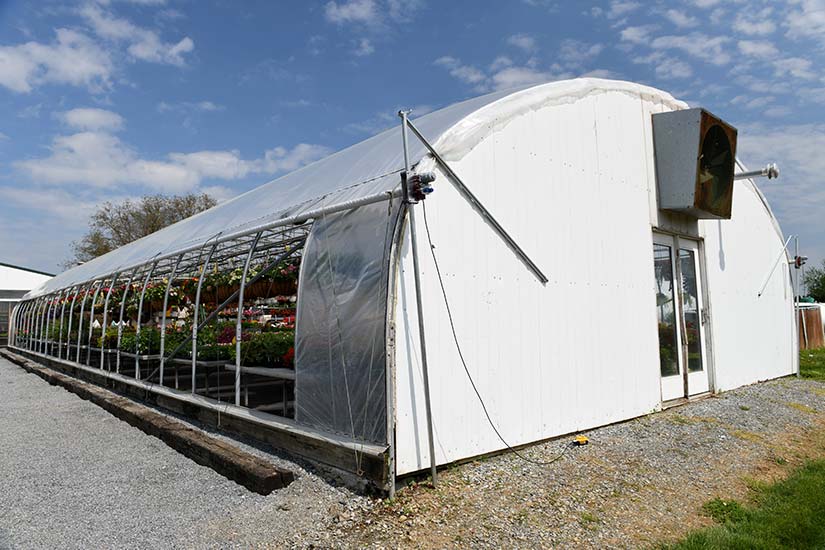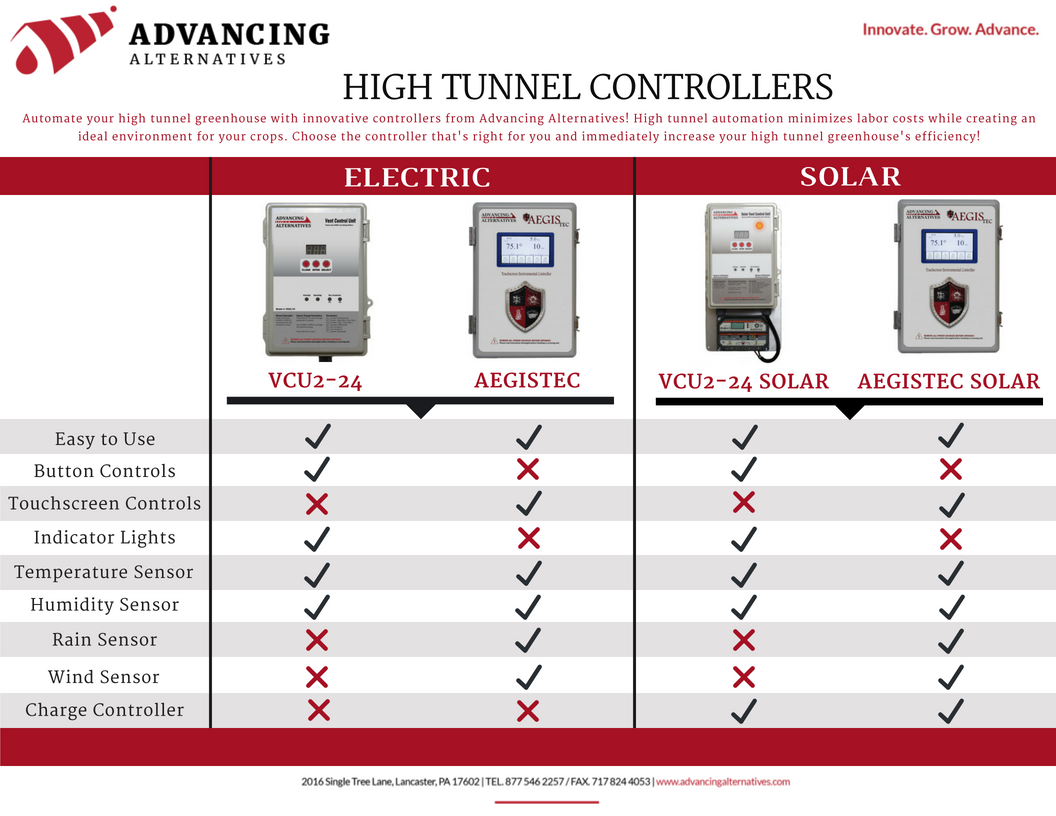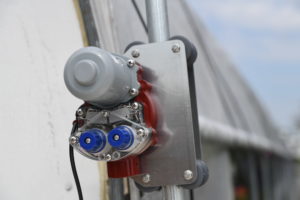Thanks to their simple design and ongoing list of benefits, high tunnel greenhouses are being used more often than ever before. Whether you’re looking to grow vegetables, fruit, flowers, or trees, high tunnels have the ability to provide crop protection and an ideal growing climate at an economical price.
However, many beginner growers aren’t aware of the advantages of high tunnels and how they differ from standard greenhouses. Let’s take a look at the basics!

What is a High Tunnel Greenhouse?
A high tunnel greenhouse is an unheated structure that allows growers to extend their crop growing seasons. Longer growing seasons result in an increased product yield and higher profits.
This type of greenhouse is often referred to as a hoop house due to its rounded, half-circle construction. It usually has a frame that’s composed of pipes and is covered with a layer of heavy greenhouse plastic.
Traditional vs. High Tunnel Greenhouses
The Differences
There are a few factors that separate high tunnel greenhouses from standard greenhouses. High tunnel greenhouses:
Use Fewer Required Materials — When it comes to building high tunnel greenhouses, there are fewer materials used than with traditional greenhouses. Since the main components are metal piping and a plastic covering, the price to set up one for operation is minimal.
Have Lower Operating Costs — While traditional greenhouses are generally equipped for heating and cooling, high tunnel greenhouses are passively heated from the sun and cooled through natural ventilation. Growers simply roll up the sides to let fresh air move through the greenhouse.
Are Conveniently Portable & Expandable — High tunnels can be disassembled and moved to a different location if desired. Also, they can easily be expanded for additional interior growing space. Expanded high tunnels are called multi-bay high tunnels.
The Similarities
Despite drastic differences in construction and overall cost, high tunnel greenhouses provide many of the same benefits that traditional greenhouses offer. Both types of greenhouses allow for:
Better Crop Control — Since both greenhouses cover and protect crops, growers have the ability to control the amount of water and sunlight crops receive. The soil is also protected from rainwater runoff, which allows it to retain its natural nutrients for increased plant health.
Extended Growing Seasons — Both structures protect crops from extreme temperatures and weather conditions. Because of this, growers can expect at least four to six weeks of added production by planting earlier and harvesting later than they would with outdoor crops.
Increased Growth Rates — The greenhouses help to create ideal growing conditions in any climate. Plants grow healthier and faster in optimal environments.
Protection from Pests — Greenhouses limit crop exposure to harmful insects. This helps minimize the risk of pests and diseases that commonly wreak havoc on outdoor plants.
How to Automate Your High Tunnel Greenhouse
Just like with a standard greenhouse, high tunnel greenhouse automation provides growers with a way to conveniently control interior conditions. With the help of automation components and accessories, you can ensure ideal temperatures and humidity levels.
High Tunnel Automation Components
We provide equipment that’s ideal for high tunnel greenhouse applications. Take a look at some of the components that you’ll need to automate your high tunnel:
Controllers
A controller does the work so you don’t have to! It automatically maintains a set temperature within your tunnel. Plus, it comes equipped with the electrical components needed to provide clean and consistent power to your ventilation drive motors.
Our controllers utilize an all-in-one design for simple installation with less wiring than comparable controllers on the market. We recommend the following controllers for high tunnel usage because they’re specifically designed to protect each motor it controls. This is essential for remote locations and long high tunnels where automation is necessary, but obstructions to vent travel may not be clearly visible.
Use our comparison chart to easily choose which controller is right for your operation:
 Low Voltage Motors
Low Voltage Motors
 While controllers are the brains of the operation, the motors do the heavy lifting. Motors connect to your controller and work to automatically roll up the sidewalls of your greenhouse.
While controllers are the brains of the operation, the motors do the heavy lifting. Motors connect to your controller and work to automatically roll up the sidewalls of your greenhouse.
Our strong, lightweight 24 volt motors are perfect for use with the high tunnel controllers. They’re specifically designed to withstand the harsh outdoor environments that high tunnels are located in.
High Tunnel Automation Accessories
Roll Bars
For high tunnel greenhouses, our greenhouse construction specialists recommend the use of side clasp roll bars. These roll bars are made of strong aluminum and are designed for attaching arched curtain ventilation fabric within integrated wire lock channels. It evenly distributes torque along multiple connected bars, eliminating sagging that’s commonly seen with the use of weak pipe connections.
The side clasp roll bars come with a splice tube and four fasteners, allowing you to easily connect ventilation fabric. This is ideal for large or multi-bay high tunnels that utilize many individual pieces of fabric and require secure connections.
Wind Control
We offer a variety of innovative wind control products that help to keep greenhouse ventilation curtains secure in harsh, exposed locations. With the help of items such as straps, brackets, seals, hooks, and ropes, you won’t have to worry about strong gusts of wind exposing crops to the undesired outdoor elements.